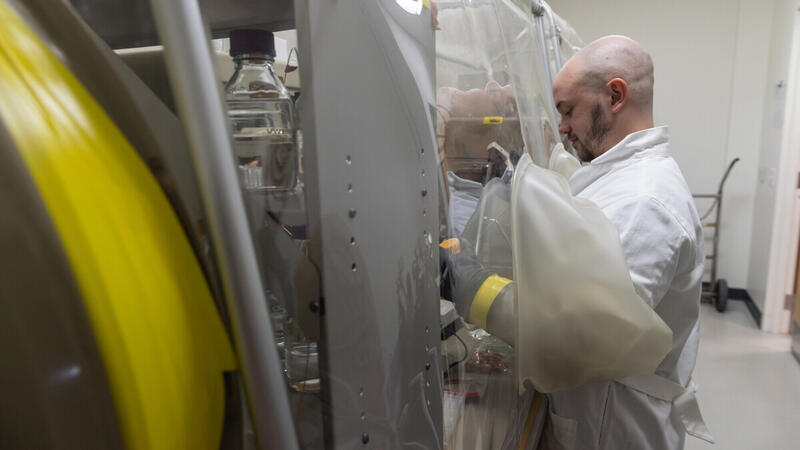News
Sustainable Biomass Conversion
Dual approaches pinpoint genes for better biofuel production
University of Wisconsin–Madison scientists have developed a new method for efficiently pinpointing genes that help microbes resist toxic chemicals, which could enable innovations in biotechnology, medicine, and agriculture.
Over millions of years, plants have developed ways to protect themselves. For example, plants produce special chemicals, or metabolites, to combat harmful microbes, especially fungi. But those same metabolites can make it harder for biorefineries to ferment the plant sugars into fuel or other products with yeast, a type of fungus.
A team of researchers including current and former Great Lakes Bioenergy Research Center scientists has been honored for their efforts to engineer soybeans that produce an eco-friendly dye and a brain-boosting compound.
Efforts to produce sustainable fuels and chemicals from non-food plants focus on lignin, a part of the cell wall that binds together sugars and gives plants structure. Lignin contains ring-shaped molecules known as aromatics that some microbes can convert into chemicals used to make plastics and other products. But breaking this complex matrix — or polymer — into smaller, useful units is challenging.
Despite growing interest in Z. mobilis for bioenergy production, scientists have limited understanding of how this treated biomass solution (known as hydrolysate) affects it. So scientists with the Great Lakes Bioenergy Research Center used a systems-level approach to study the microbe’s response to hydrolysate produced from switchgrass treated with a process called ammonia fiber expansion (AFEX). The findings revealed that the hydrolysate triggers a complex stress response, causing changes in the membrane that controls what enters and exits the cell as well as how the microbe digests carbon in the plant sugars.
Three years after joining the Great Lakes Bioenergy Research Center, Michigan State University microbiologist Sarah Lebeis has been tapped to guide the center’s scientific research.
Two WEI researchers explain the connection between gene editing and clean energy in plain-language essays about their work — one with plants, the other with microbes.
GLBRC researchers at Michigan State University are racing to build climate-resilient crops before global food systems reach a breaking point.
GLBRC scientists used computer modeling to simulate the movement of every atom in the system to better understand how lignin molecules behave in various organic solvents and how the dissolved lignin building blocks interact with catalyst surfaces. The results showed that some organic solvents are more effective than water at dissolving lignin, causing the molecules to spread out more and increasing the area accessible to interact with the catalyst.
Brayan Riascos Arteaga is a third year PhD student in the Department of Civil and Environmental Engineering. He works in the Noguera lab, where he’s developing ways to utilize manure fibers as a lignocellulosic resource.
Making fuels and other products from plants requires treating the plant fibers to break apart sugars and other parts of the plant cell wall. The leftover liquid (or liquor) from the process must be treated to remove hazardous compounds before it can be safely thrown away. Therefore researchers have explored reusing spent liquor or extracting the organic compounds for use as fuels or industrial chemicals. Here, researchers identified phenolic compounds, a group of ring-shaped aromatic molecules, in spent liquor from a pretreatment process using ammonia dissolved in water.





